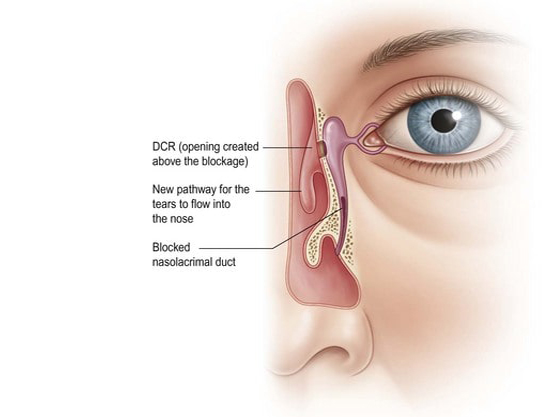 Dacryocystorhinostomy in Children: A Solution for Constant Tearing
Dacryocystorhinostomy in Children: A Solution for Constant Tearing
Dacryocystorhinostomy (DCR) is a common eye surgery performed on children. It's done when a child's tear duct is blocked, preventing tears from draining properly. As a result, the child's eye becomes constantly watery and prone to infection.
Why Do Children's Tear Ducts Become Blocked?
The tear duct is a small tube that carries tears from the eye to the nose. In some infants, this duct doesn't develop fully and remains closed. Various reasons can cause a blocked tear duct, including:
Incomplete development during fetal development: This is the most common cause of blocked tear ducts in infants.
Frequent infections: Repeated infections in the tear duct can lead to inflammation and blockage.
Small tumors: In rare cases, small tumors can block the tear duct.
Symptoms of Blocked Tear Ducts in Children
Constant tearing from one or both eyes: This is the most common symptom of a blocked tear duct.
Red and swollen eyes: Due to the accumulation of tears and potential infection.
Pus in the inner corner of the eye: If the tear duct is infected.
Irritation of the skin around the eye: Caused by constant contact with tears.
Diagnosing a Blocked Tear Duct
A pediatric ophthalmologist can diagnose a blocked tear duct. They will examine the child's eye and perform simple tests, such as inserting a colored dye into the tear duct.
Dacryocystorhinostomy Surgery
If the blockage doesn't resolve with simple treatments like massage and eye drops, the doctor may recommend surgery. Dacryocystorhinostomy is usually an outpatient procedure performed under local anesthesia. During the surgery, the doctor uses a small instrument to open the blocked tear duct, allowing tears to drain properly.
Benefits of Dacryocystorhinostomy
Eliminates constant tearing: The most significant benefit is resolving the constant tearing and improving the child's appearance.
Reduces the risk of infection: By opening the tear duct, the risk of recurrent eye infections is decreased.
Improves the child's quality of life: The child can play and engage in daily activities without worrying about constant tearing.
Risks of Dacryocystorhinostomy
While dacryocystorhinostomy is generally safe, like any surgery, it may have some risks, such as mild bleeding, infection, or a narrowing of the tear duct after surgery.
Post-Surgery Care
After surgery, the doctor will provide specific instructions for caring for the child's eye. This usually includes using eye drops, keeping the eye clean, and following up with the doctor for check-ups.

 Dacryocystorhinostomy in Children: A Solution for Constant Tearing
Dacryocystorhinostomy in Children: A Solution for Constant Tearing
comment